Rare Rides Icons: The Toyota Cressida Story (Part II)

In Part I of this series we were introduced to Toyota’s Cressida, aka Mark II in almost every other market. A “new” model for the North American market, Cressida picked up where the Corona Mark II left off. The main reason behind the branding change was that Cressida had greater upmarket intentions than the Mark II. When it arrived for 1978 in North America, Cressida wore entirely different styling to its predecessor: Upright, formal shapes replaced the faster-looking curves of the Mark II. The conservative mid-sizer wore a Euro-inspired visage with many Jaguar cues, and the rest of the styling was a mixed bag of American and Japanese flavors.
But the first generation was not long for the world, and after just three model years Toyota released an all-new Cressida. This second edition stuck much closer to Toyota’s typical three-box playbook and added Eighties technology into the bargain. Time for X60.
In August of 1980, the X60 version of the Mark II entered production in Japan for a model year ’81 debut. Body styles were different than before, as there was no longer a two-door option: The slow-selling and Jaguar-esque Mark II coupe that was never imported to North America vanished. X60’s lineup consisted of three different body styles with four doors. On offer as before were the traditional sedan and wagon, as well as a new and exciting hardtop sedan. Toyota had a revised vision for its luxury coupe offering and separated it from the Corona and Mark II names with the Soarer’s debut in 1981. The Soarer eventually merged into a very familiar car, the Lexus SC 300.
The X60 used the same 104.1-inch wheelbase as the X30 and even shrunk a little in length. The new sedan was 180 inches long, down from 181.7 inches the year prior. Width increased slightly, from 66.1 to 66.5 inches, while height decreased from 57.3 inches to 56.1. The new car was a bit lighter too, and sedans weighed 2,469 in 1981, versus 2,679 in 1980.
The fourth-generation Mark II used a wider variety of engines than its predecessor, 10 in total. About half the X60’s engines were carryovers from the X30, though new engines possessed technology like dual overhead cams and optional turbocharging. The smallest engine available on a Mark II was again a 1.8-liter 13T-J14 inline-four, while the largest engine was a 2.8-liter inline-six (previously the largest was a 2.6). The smaller 2.0-liter 1G inline-six was available with SOHC, DOHC, and with a turbocharger. There were also two diesels globally, instead of one.
There was also greater transmission choice than before. The most basic Mark II had a four-speed manual, but a five-speed was available too. And though the X30 had a four-speed automatic, some versions of the X60 downgraded and used a three-speed. There was a four-speed available as well, a more modern version of the A43D found in the prior Mark II. It was electrically controlled instead of hydraulically and had power modes for Normal, Economy, or sporty Power operation.
Toyota wanted the X60 to look up to date next to other Japanese mid-size sedans and did not pursue a European tinged brougham appearance for the new generation. The new model had a more traditional three-box shape and was even more upright than before. Proportions were more traditionally rear-drive, with lesser overhangs than before as the sedan tidied up its look. The front end ditched any Jaguar cues and went for a more basic and unadorned square-jawed look.
There were large quad sealed beam headlamps (single composite units in other markets with less archaic headlamp regulation), and wrap-around corner markers. No separate driving lamps, no chrome bumper, and no waterfall chrome grille. Grilles were much simpler generally and wore a diagonal grate look ringed in thin chrome. The front end’s appearance wasn’t all that removed from the A-body Buick Century that would appear the following year.
The hood and side profile were all squared off, as the prior generation’s rounded fenders and downward sloping character line were replaced by almost flat horizontal lines. The standard sedan became a six-window via the addition of a small window aft of the rear door. Chrome body trim was lessened generally, though remained around the wheel arches. Side trim followed the lower character line and was body-colored or black instead of chrome. Body-colored trim matched on higher-spec Cressidas where the bumpers were also painted. Chrome dog dish wheel covers were replaced by a more modern-looking lace alloy design.
The rear end of the Cressida benefitted from considerable modernization in the X60 generation. Bumpers were still chunky, but better integrated and were now (usually) painted. Chrome trim was limited to an area below the rear fascia. Rear lamps took on a more Eighties look, and were more horizontal in their shape in contrast to the dorky-looking vertical layout the year prior.
EFI badging let onlookers know you were the owner of a truly modern sedan. Interestingly, Toyota still advertised the Cressida as “European looking,” even though it was very Japanese in appearance. The four-door hardtop version was most often marketed as the Mark II Grande (a high trim) and mandated a larger engine. Only the standard sedan and wagon were imported to North America.
Inside, the Cressida was much more modern than it was before. Gauges were transformed into something resembling 80s Mercedes-Benz dials, with a clearer and more informative set of information. Vents made the transition into familiar rectangular units, instead of the X30’s circular vents with crosshair metal covers. There was a graphic equalizer too, and much more power equipment. Climate control received an Eighties look and was more comprehensive than before (though still manual). And wood appeared under the gauges in front of the driver, and around the window switches. The steering wheel went from a three-spoke Seventies design to a two-spoke one that would look current into the late Eighties.
Other modern features included standard automatic shoulder belts upfront, standard cruise control and air conditioning, and a four-speaker stereo. Those speakers in Mark II markets carried the world’s first electronic voice warning system, but that didn’t make the cut for the Cressida customer. The auto shoulder belts were added exclusively for American customers and were a world first. In general, the American market Cressida received a much different interior to right-hand drive cars, and even left-hand drive Cressidas and Mark IIs in other markets. Toyota put extra effort into more luxurious materials with the new Cressida and proudly proclaimed it was a “grand touring class” car. Cressidas sold in Canada had a different steering wheel, less fancy materials, and no automatic belts.
For North American market Cressidas, fully loaded was once again the specification of choice. The largest 2.8-liter engine was standard and made 116 horsepower with the assistance of modern electronic fuel injection. Horsepower was still low as the X60 Cressida’s initial engine was SOHC, the 5M-E. After two model years, it was replaced by the 5M-GE, a DOHC version of the engine that managed a more respectable 143 horses. That small number of horsepower rolled through the corners confidently thanks to a new McPherson strut suspension for 1981.
There was just one trim available at the new Cressida’s debut in 1981, and the only thing a customer needed to select was the body style. A sedan asked $10,988 ($35,508 adj.) and the wagon was $11,739 ($37,935 adj.). Pricing was only adjusted in a minor way over the 1979 Cressida, even though the car was much more advanced and had more equipment.
Toyota revised the Cressida for the 1983 model year, the most notable change being the DOHC inline-six mentioned above. Other revisions included a new independent semi-trailing link rear suspension (not applicable to the wagon) and ventilated disc brakes at the rear. The front clip was revised with an egg-crate Ford LTD-type grille, though the original looked better. Lamps were modernized at the rear, and extended out to the corners as well as inward toward the license plate. Turn indicator lenses migrated to the corners of the rear. The new rear lamps were an improvement, and looked less like a Corolla and more like a Camry.
Just as the X60 Cressida was newly on sale in its revised format, a project was started within the highest levels at Toyota. In August that year, a secretive project called F1 began, which resulted in a landmark vehicle years later that sealed the Cressida’s fate. You’d know the car that resulted from F1 as the Lexus LS 400. In the meantime, Cressida continued to build its reputation as a reliable and comfortable upscale car and was nearly ready for its next iteration, the X70. More next time.
[Images: Toyota]

Interested in lots of cars and their various historical contexts. Started writing articles for TTAC in late 2016, when my first posts were QOTDs. From there I started a few new series like Rare Rides, Buy/Drive/Burn, Abandoned History, and most recently Rare Rides Icons. Operating from a home base in Cincinnati, Ohio, a relative auto journalist dead zone. Many of my articles are prompted by something I'll see on social media that sparks my interest and causes me to research. Finding articles and information from the early days of the internet and beyond that covers the little details lost to time: trim packages, color and wheel choices, interior fabrics. Beyond those, I'm fascinated by automotive industry experiments, both failures and successes. Lately I've taken an interest in AI, and generating "what if" type images for car models long dead. Reincarnating a modern Toyota Paseo, Lincoln Mark IX, or Isuzu Trooper through a text prompt is fun. Fun to post them on Twitter too, and watch people overreact. To that end, the social media I use most is Twitter, @CoreyLewis86. I also contribute pieces for Forbes Wheels and Forbes Home.
More by Corey Lewis
Latest Car Reviews
Read moreLatest Product Reviews
Read moreRecent Comments
- Sayahh I do not know how my car will respond to the trolley problem, but I will be held liable whatever it chooses to do or not do. When technology has reached Star Trek's Data's level of intelligence, I will trust it, so long as it has a moral/ethic/empathy chip/subroutine; I would not trust his brother Lore driving/controlling my car. Until then, I will drive it myself until I no longer can, at which time I will call a friend, a cab or a ride-share service.
- Daniel J Cx-5 lol. It's why we have one. I love hybrids but the engine in the RAV4 is just loud and obnoxious when it fires up.
- Oberkanone CX-5 diesel.
- Oberkanone Autonomous cars are afraid of us.
- Theflyersfan I always thought this gen XC90 could be compared to Mercedes' first-gen M-class. Everyone in every suburban family in every moderate-upper-class neighborhood got one and they were both a dumpster fire of quality. It's looking like Volvo finally worked out the quality issues, but that was a bad launch. And now I shall sound like every car site commenter over the last 25 years and say that Volvo all but killed their excellent line of wagons and replaced them with unreliable, overweight wagons on stilts just so some "I'll be famous on TikTok someday" mom won't be seen in a wagon or minivan dropping the rug rats off at school.








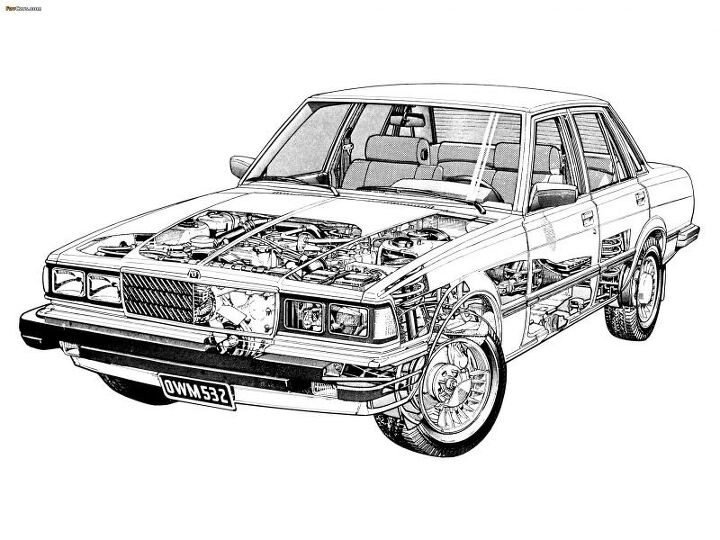



















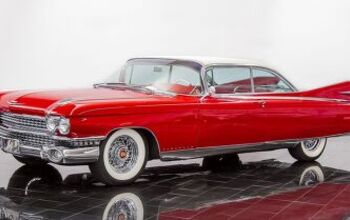




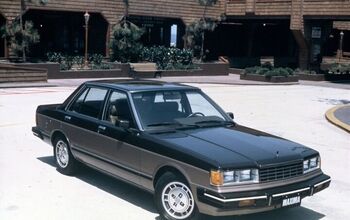



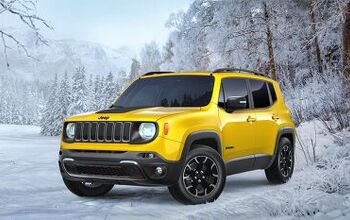


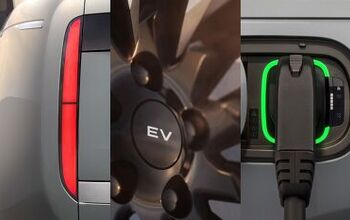




Comments
Join the conversation
What the hell is going on with the "This is the start of something special" poster? Some kind of strange take on a Darth Vader knockoff watching over Cressida buyers?
A friend inherited one of these from his grandfather back in the early 2000's. North east car that had rotted out and he (the grandpa) had the body all redone and repainted (same as the blue car in the article). Buddy took it out to California for a couple years and then drove it back to the Ontario CA, sold it to a friend and flew back to California. That friend sold it to an older couple, they took it to get saftied and the hoist went right through the frame and floor lol. They abandoned it there and it could be seen from the road, where it sat for years until it was scrapped.